This website uses cookies so that we can provide you with the best user experience possible. Cookie information is stored in your browser and performs functions such as recognising you when you return to our website and helping our team to understand which sections of the website you find most interesting and useful.
*:not([hidden]):not(style) ~ *:not([hidden]):not(style){margin-top:1rem;}
]]>
By Gemma Handy
Sea View Farm, Antigua
img{overflow:hidden;position:absolute;top:0;right:0;bottom:0;left:0;display:-webkit-box;display:-webkit-flex;display:-ms-flexbox;display:flex;-webkit-box-pack:center;-webkit-justify-content:center;-ms-flex-pack:center;justify-content:center;-webkit-align-items:center;-webkit-box-align:center;-ms-flex-align:center;align-items:center;width:100%;height:100%;object-fit:cover;}
]]>
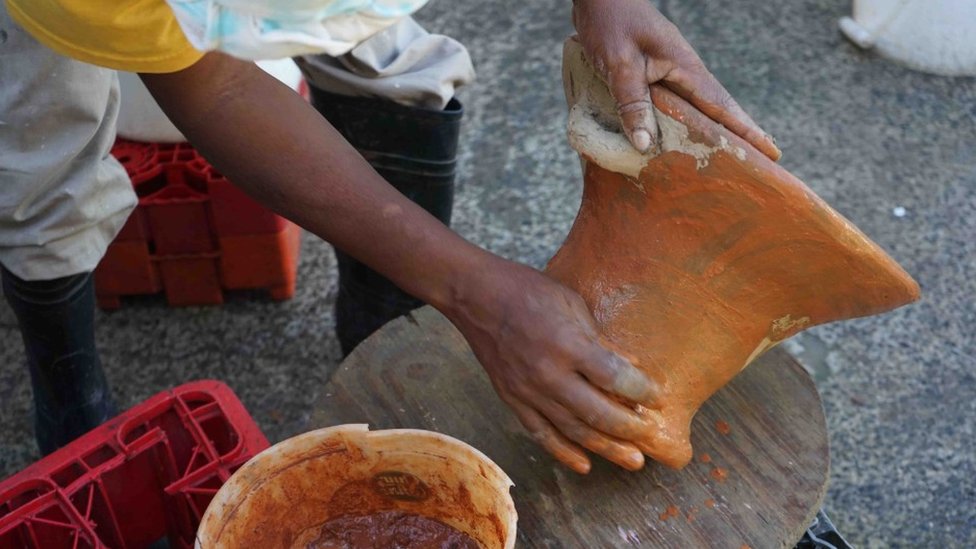
*:not([hidden]):not(style) ~ *:not([hidden]):not(style){margin-top:1rem;}
]]>
Breaking bread has been a hallmark of family life in cultures across the globe for millennia.
Ask the elders in Antigua and Barbuda for their memories of communal meals in days gone by and many will recall with fondness the times spent sitting around a traditional earthenware pot, heated by hot coals, as the evening meal cooked.
In generations past, this was where folk tales and ghost stories were brought to life, and superstitions and proverbs handed down.
Culinary techniques may have evolved over the years but the skilled practice of moulding the clay vessels entirely by hand and firing them on an open bonfire survives to this day.
Third generation potter Edith Lyne is one of a clutch of people still crafting the pots from natural clay in the countryside village of Sea View Farm.
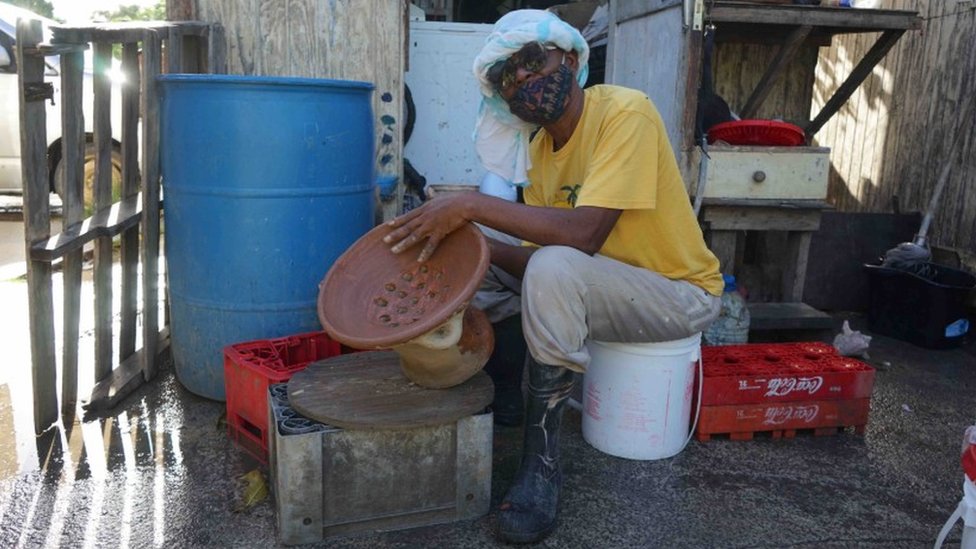
At sunrise, she is found elbow-deep in a bag of damp black clay which she will shape into a "jabba" - similar to a crockpot - using a calabash to plane the sides.
It takes about half an hour to form, she explains. Then it will be left to air-dry for several days before being daubed with red clay mixed with water as a varnish.
The final stage is the firing. This part, Mrs Lyne says arranging her creations among a pile of tree branches soaked in fuel, is the reason why the art is in decline.
"Young people can't take the heat," she grimaces as the flames burst forth.
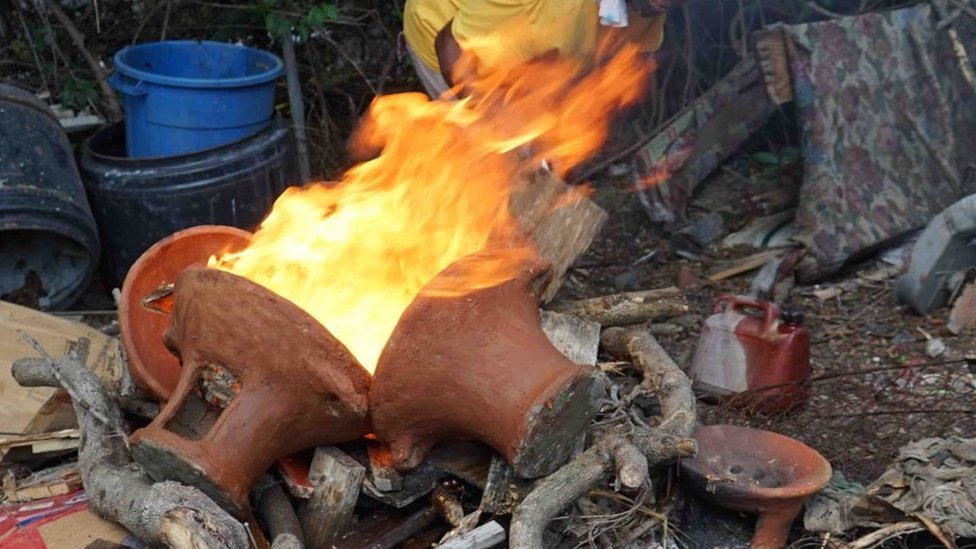
Dawn may barely have broken but the temperature is already stifling in the Caribbean climes.
For Mrs Lyne's grandmother, pottery was a thriving business. Back then when the country was still under British control, she sold her pieces for two pence each.
The cooking pots Mrs Lyne makes, along with the ashtrays and figurines she sells to tourists for a few dollars, are a supplement to her day job as a cleaner.
These days much of the pottery seen in backyards nationwide is largely decorative, a nod to nostalgia and handy as flowerpots. But some traditionalists still use the vessels for cooking, and roadside stalls barbecuing ears of corn on them and simmering stews can be seen sporadically across the landscape.
img{overflow:hidden;position:absolute;top:0;right:0;bottom:0;left:0;display:-webkit-box;display:-webkit-flex;display:-ms-flexbox;display:flex;-webkit-box-pack:center;-webkit-justify-content:center;-ms-flex-pack:center;justify-content:center;-webkit-align-items:center;-webkit-box-align:center;-ms-flex-align:center;align-items:center;width:100%;height:100%;object-fit:cover;}
]]>
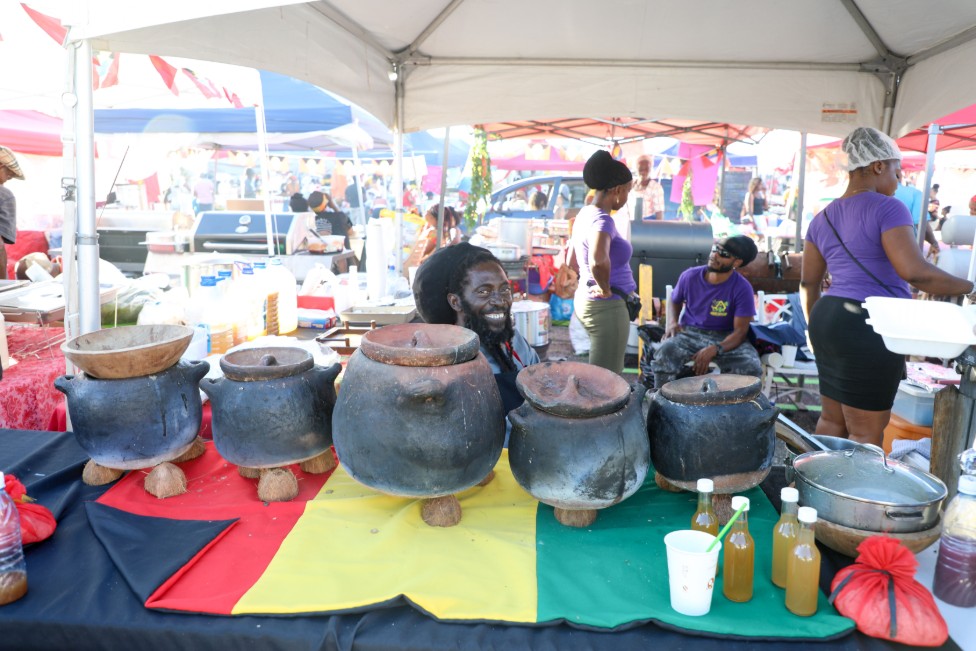
image copyrightCourtesy of Alex Rhodes
"Almost every house in Antigua has a coal-pot in case the gas runs out," Mrs Lyne says. "You can cook anything you want in it really and it only takes a few minutes longer than a stove."
Sea View Farm has been a hub for pottery because both types of clay used are found within its environs - although the exact locations are kept secret from outsiders.
While Amerindians are known to have used ceramics for cooking, some of the varieties which persist today are likely to have their roots in the customs that Antiguans' ancestors brought with them from Africa.
img{overflow:hidden;position:absolute;top:0;right:0;bottom:0;left:0;display:-webkit-box;display:-webkit-flex;display:-ms-flexbox;display:flex;-webkit-box-pack:center;-webkit-justify-content:center;-ms-flex-pack:center;justify-content:center;-webkit-align-items:center;-webkit-box-align:center;-ms-flex-align:center;align-items:center;width:100%;height:100%;object-fit:cover;}
]]>
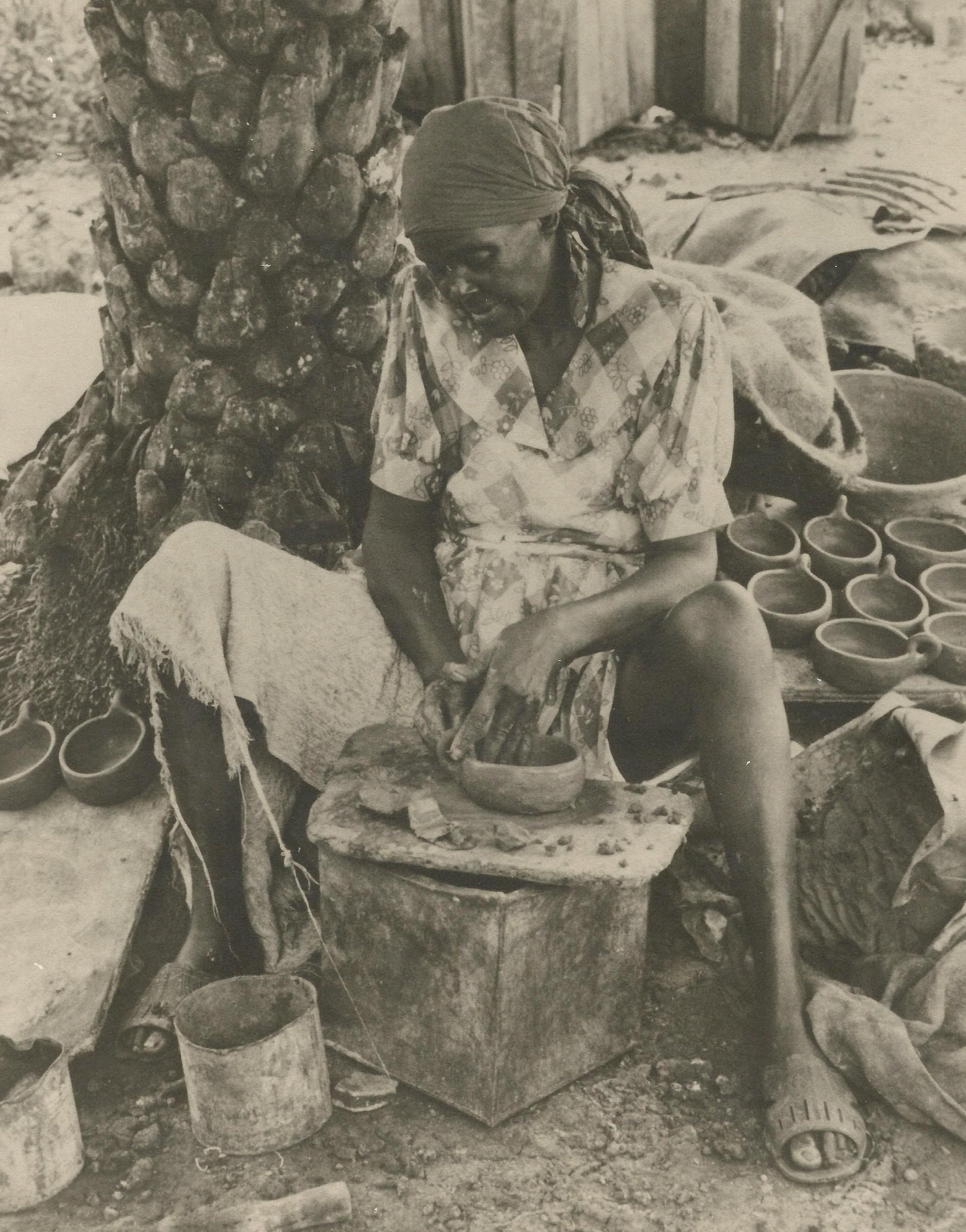
image copyrightCourtesy of National Museum of Antigua and Barbuda
Similarities, historians say, include the pottery being non-wheel made, baked in open fires, and created almost exclusively by women.
"When I was a child all the cooking was on a coal-pot; we didn't use a stove until the early 70s. But my niece still uses a coal-pot every weekend," Mrs Lyne says.
The time-honoured practice makes for a unique taste too. Coals or wood are placed inside the bowl of the structure used to support the "jabba" which sits atop it.
The inside of the jabba should be wiped with green banana before placing the food in, Mrs Lyne explains.
A typical meal might be national dish pepperpot, a hearty stew of meats and vegetables including okra and eggplant.
Some elders still eat "tratcha", a dumpling of cornmeal, flour and coconut, wrapped in banana leaves and roasted.
The jabba's cousin - the "yabba", a flat, tray-like vessel - is used for roasting cassava bread, known locally as "bamboola", among other things.
"The pots are mainly used for slow-cooked food like stews and soups," says one resident, attorney George Lake. "The use of wood or coals gives a smoky, earthy flavour."
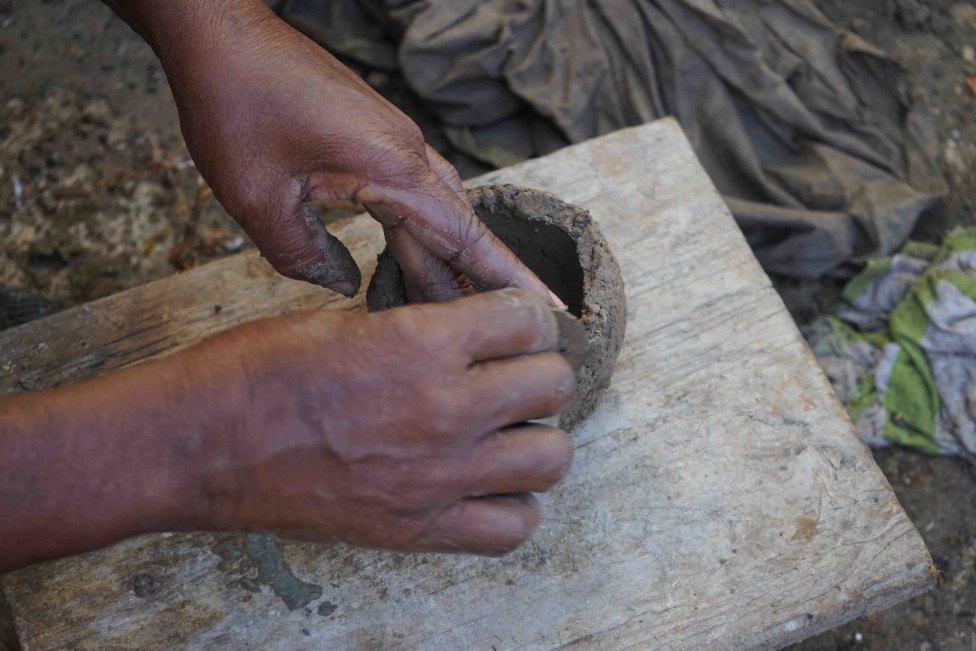
The days before electricity was when coal-pots had their heyday, says Myra Piper, a research assistant at the national museum.
"In my grandmother's day, family life involved sitting sharing tales while the food cooked. Pepperpot, salt fish and rice and what we called 'widdy widdy bush' - similar to spinach - were common dishes.
"Old-time proverbs were also passed down, like 'cockroach na ha no right ina fowl pen' meaning stay away from known danger; another was 'mout open tory jump out', meaning once you open your mouth you are liable to say anything," she smiles.
Food remains an integral part of local culture in Antigua and Barbuda but many people, such as Mrs Lyne, fear the art of local pottery might soon be lost forever.
"People don't realise how much work goes into it; it's a skill," she says, adding: "There are only about three or four of us left making them now. It's sad because it's a part of our history."
Related Topics
*{margin:calc(0.5rem / 2);}
]]>



 Africana55 Radio
Africana55 Radio 
